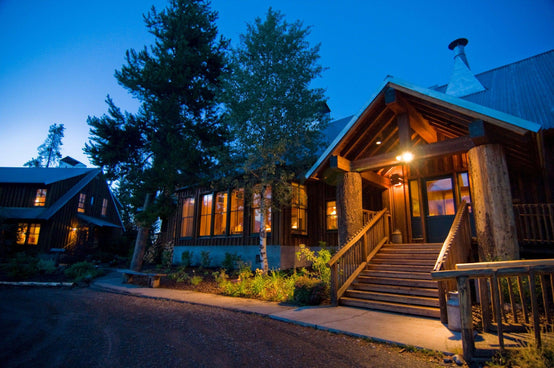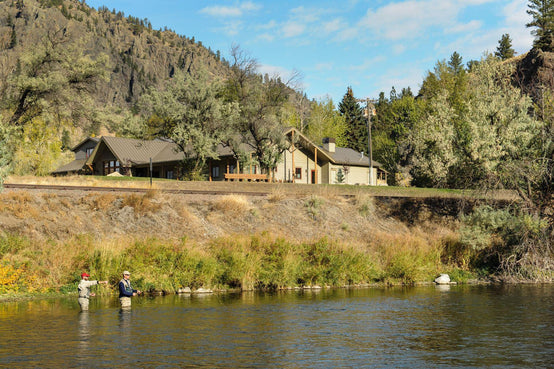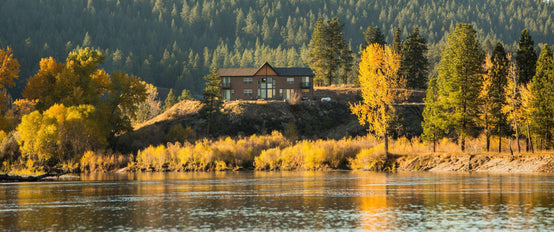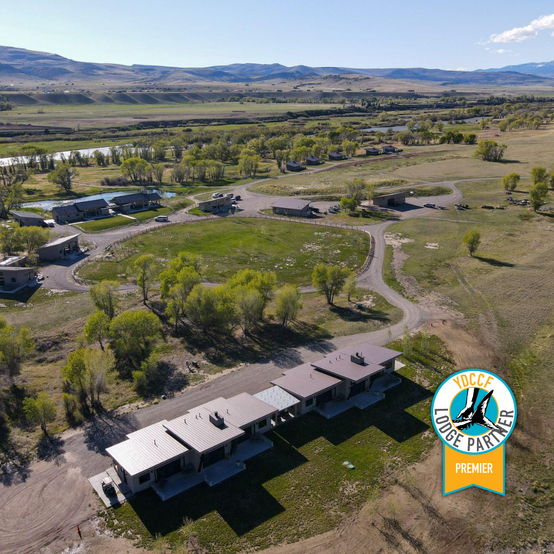General Information
Gallatin River Lodge’s team of experienced and professional guides fish all of the “great” waters located in this part of Southwest Montana.
Gallatin River
The Gallatin River is a 10-minute walk beyond the door of the Lodge, just across adjacent hay meadows. The Gallatin flows over 90 miles with hundreds of small creeks adding to its flow. It originates from springs in Yellowstone National Park and flows to Three Forks, the birthplace of the Missouri River. The three sections of the Gallatin are the Meadow, Canyon, and Valley.
The Meadow stretch extends approximately 30 miles from Yellowstone to Big Sky. Riffles, runs, and pocket water characterizes the Gallatin here. Rainbow, brown, cutthroat, and cut-bow hybrids inhabit this area. The Canyon stretch extends about 25 miles through a narrow, shaded, rocky gorge. The classic river fishing scenes from A River Runs Through It were filmed in this section.
The Valley section contains 35 miles of classic Western freestone water. The Gallatin River Lodge sits along this section. Offering excellent wading for browns and rainbows, the river primarily braids through private ranch property. Larger browns and rainbows can be found in this section. Access is more limited than the upper sections.
The last five miles of the river can be accessed by boat, but all other areas cannot be fished from watercraft.
April and early May are excellent months to fish the Gallatin. Anglers fish stonefly, attractor nymphs, and streamer patterns and also see consistent midge and baetis hatches during these months. By late May, runoff begins and the Gallatin usually is not fishable until mid-June. Late June is salmon fly time on the Gallatin. July brings salmon flies, golden stones, caddis, and PMDs. Attractor nymphs work well throughout the summer months. August and September are hoppers, caddis, and attractor dry months. October is one of the best months on the Gallatin and streamers and nymphs are quite productive.
East Gallatin
The East Gallatin runs north of town and eventually meets up with the Gallatin. Surrounded mostly by private farmland, access is limited and all fishing is done by wading. The East Gallatin is a smaller stream that holds good numbers of rainbows and browns and can be very productive. It’s a great alternative to fishing the Gallatin and is within 20 minutes of the Lodge.
Madison River
The Madison River is within 30 miles of the Lodge. It contains three sections as well: the Upper section in Yellowstone National Park, the tailwater of Hebgen Dam, and the tailwater of Ennis Dam. The Lodge will usually fish the section below Hebgen to Ennis most of the year, and the lower river in winter, spring, and fall.
The upper river, although a tailwater, fishes more like a freestone river and has been described as the “50 Mile Riffle.” Brown and rainbow trout are the predominant species, and native whitefish and Westslope cutthroat are also found here. Typically, anglers will float and wade fish the Upper Madison, as most areas of the river pass through the private property over this stretch. April through mid-May means stonefly and attractor nymphs, while spring caddis and baetis hatches become more prolific beginning in mid-April. In late May, the river can occasionally become unfishable due to runoff.
Mid-June through August, the Madison offers one of the finest angling experiences in the world. The Madison’s famous salmon fly hatch begins in early July. A variety of hatches occur throughout the summer including numerous mayflies, stoneflies, and caddis. Hoppers and various attractor patterns work well through early September. Terrestrials, streamer, and nymph fishing in September and October often produce some of the largest fish.
Over the course of 45 miles, the lower Madison flows through the Bear Trap Canyon to Three Forks, MT, and the Missouri River. It is a deep, fast river through the canyon stretch. Anglers can float and wade the area of the lower Bear Trap to within a few miles of its confluence with the Jefferson River. This tailwater offers consistent hatches in the spring including prolific caddis, midge, and baetis. Large browns and rainbows inhabit this area, along with a few cutthroats. Mid- to late June offers prolific stonefly hatches and some super fishing. Fall streamer fishing for big browns and rainbows often produces some of the biggest fish of the season.
Yellowstone River
As the longest undammed river in North America, the Yellowstone provides over 300 miles of fishable trout water. It flows north of Yellowstone Lake within the Park bounds and flows hundreds of miles to meet the Missouri River near the Montana-North Dakota border. Deep pools and runs characterize this great freestone river. Typically, Lodge guests will float fish the river from the boundary of Yellowstone Park to Big Timber, MT, a section of over 70 miles. Browns, rainbows, and cutthroat are the predominant species. The Yellowstone is open year-round to angling. Spring and fall months offer the most consistent hatches of stoneflies, caddis, midges, and mayflies such as baetis, BWOs, and sulphurs. Terrestrials and attractor fishing characterize summer angling. Drifting a large hopper pattern over good water often delivers some of the largest fish in the river. The Yellowstone fishes well in the fall and offers some of the most spectacular views of the Montana scenery. Streamer and nymph fishing can be productive throughout the fall and winter.
Paradise Valley Spring Creeks/Streams/Alpine Lakes
Many famous spring creeks are nearby: DePuy’s, Nelson’s, Armstrong’s, and the MZ Ranch are all within 30 minutes of the Lodge. These spring creeks flow on private property and require a rod fee. Many anglers find challenging, technical fishing on the creeks; an experienced guide can really help with this type of fishing. Small streams, stillwaters, and alpine lakes are nearby. The Lodge can also make arrangements for horseback access trips to isolated alpine lakes and backcountry streams in the area. Guests may also travel to Yellowstone National Park, just an hour away, and fish the numerous streams, lakes, and rivers within the Park boundary. Finally, the private pond at Gallatin River Lodge (full of rainbow trout) offers a great angling treat for many guests. It also provides a great place to practice and is used for casting instruction requests.
Boats and Equipment
Float fishing on area rivers is done via McKenzie-style drift boats designed for fly fishing. The Gallatin River Lodge can outfit you with any equipment you may need for your fly fishing trip through rentals or for purchase. Guests are welcome to ship their equipment directly to the Lodge prior to arrival.



































































